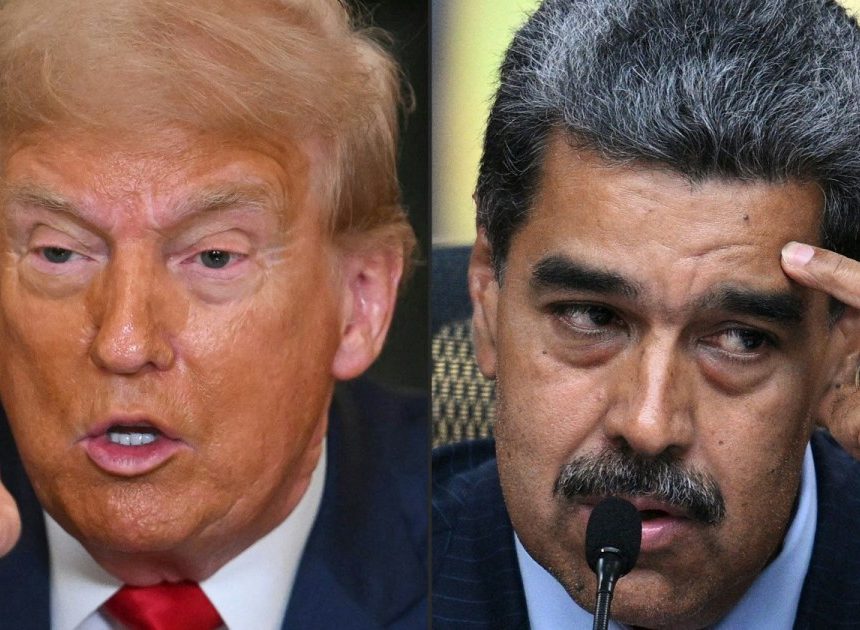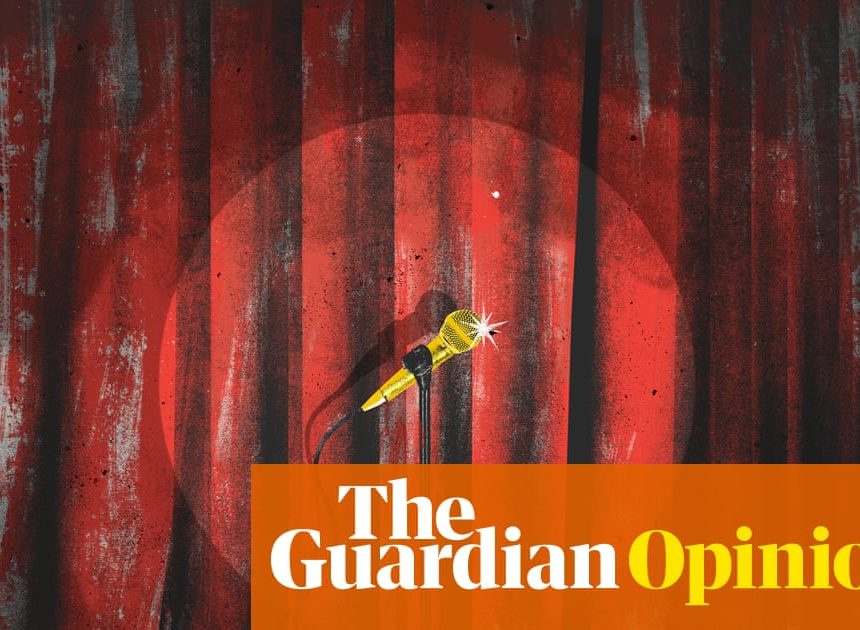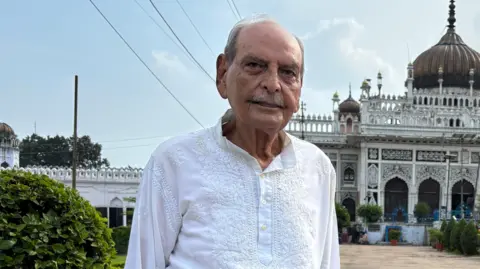 Aman/BBC
Aman/BBCIn Hussainabad, in the northern Indian state of Uttar Pradesh, 90-year-old Faiyaz Ali Khan makes his way to the Picture Gallery, a 19th Century building that is a relic of the city’s royal past.
His hands tremble as he walks, but there is a sparkle in his eyes. He has come to collect his wasika or royal pension.
Wasika, from the Persian word for a written agreement, is a pension granted to the descendants and associates of the rulers of the former Awadh kingdom. Awadh, now the central region of Uttar Pradesh, was ruled by semi-autonomous Muslim rulers – called nawabs – until the British annexed it in 1856.
India no longer has a monarchy, and former royals do not have any titles, privileges or special payments, known as privy purses. However, while their kingdoms and political power have long disappeared, some pension arrangements have continued for descendants of these families in states including Uttar Pradesh, Kerala and Rajasthan.
Roshan Taqui, a historian of Lucknow, where Hussainabad is located, says that in the early 1800s some members of the Awadh royal family lent money to the East India Company – which was then a British trading enterprise – on condition that the interest be paid out as pensions to their families. These loans were perpetual, meaning the Company never had to return the principal amount.
But soon, the British gained power in the region while the nawabs became weaker.
Around that time, Mr Taqui says, several nawabs were also forced to lend money to the Company, which needed it to fight the Afghan war.
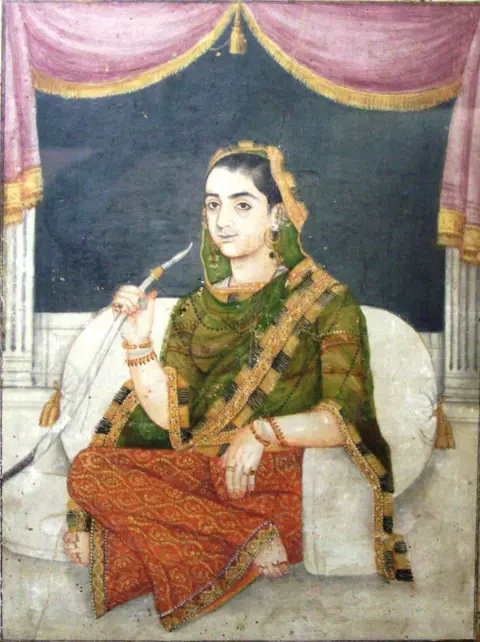 Nawab Masood Abdullah
Nawab Masood AbdullahStanding outside the Picture Gallery, which was built during the reign of former Awadh ruler Mohammad Ali Shah, Faiyaz Ali Khan says he has come to collect his payment after 13 months.
“We’ve been receiving this wasika since the time of our great-grandparents. It’s so little that I only come once a year to collect it,” he said.
The pension amount is meagre, just nine rupees and 70 paise ($0.11; £0.08) a month, but for his family, it is about honour – their last living link to a once-rich past.
“Even if we get just one paisa, we’ll spend a thousand rupees to come and collect it,” says his son Shikoh Azad.
Today, around 1,200 people – known as wasikedars – continue to collect these pensions.
However, the payouts are neither fixed nor uniform and decrease with each generation. For instance, if a person received 100 rupees and had two children, the pension would be halved after their death, leaving each with 50 rupees. As descendants grew over time, the share of pensions became even smaller.
The distribution of wasika began in 1817 when Bahu Begum, the wife of Awadh’s Nawab Shuja-ud-Daula, gave 40m rupees to the East India Company in two instalments on the condition that her relatives and associates receive monthly pensions, according to Mr Taqui.
Official records show that other people linked to the royal family also gave loans to the Company on similar terms.
After India became independent in 1947, part of the money loaned by Bahu Begum was placed in a bank.
According to Uttar Pradesh’s wasika officer SP Tiwari, about 3m rupees was first deposited in the Reserve Bank of Kolkata (formerly Calcutta) and later moved to Kanpur and then Lucknow. Today, the pensions are paid out from the interest earned on around 2.6m rupees deposited in a local bank in the city.
The payments are made by two offices in the Picture Gallery: the Hussainabad Trust, run by Lucknow’s district administration, and the Uttar Pradesh government’s wasika office. The government now transfers pensions directly into bank accounts, while the Trust pays in cash.
Danish Ansari, Uttar Pradesh’s minority welfare minister, says the wasika is given out as per policy and that the practice “dates back to the Nawabs of Awadh”.
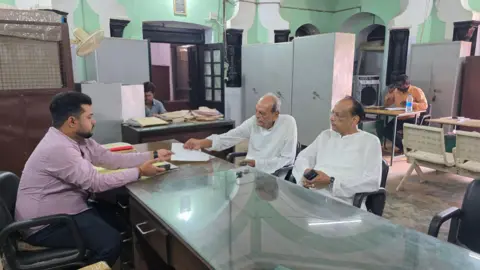 Aman/BBC
Aman/BBCCritics argue that these allowances are remnants of feudal privilege and should have no role today. But supporters see them as honorary compensations tied to historical promises that cannot be easily brushed aside.
Shahid Ali Khan, a lawyer who is also a beneficiary of the royal pension, points to his own family’s legacy. His grandfather was a minister to Nawab Mohammad Ali Shah.
Today, he receives two separate royal pensions linked to two loans, one payment of four rupees and eighty paise quarterly and another monthly payment of three rupees and twenty-one paise.
“This wasika cannot be measured in money. It’s our identity, worth more than millions. Only a few people receive it,” he says, adding that he collects it just before the holy month of Muharram, using it only for religious expenses.
“I don’t collect it throughout the year because if even a single paisa is spent elsewhere, I would feel guilty.”
Many recipients argue that the pensions should be raised in line with current interest rates.
“We’ve been receiving wasika at a 4% interest rate since the Nawabs’ time, while today’s bank interest rates are much higher,” Faiyaz Ali Khan says.
His son adds that they have made repeated appeals for the amount to be increased, but in vain.
“It’s unfortunate that I spend 500 rupees on petrol just to collect nine rupees and 70 paise,” he says.
Experts also point out that the wasika was originally paid in silver coins that each weighed more than a tola (around 11.7g).
But when the payments switched to Indian currency, the value dropped sharply.
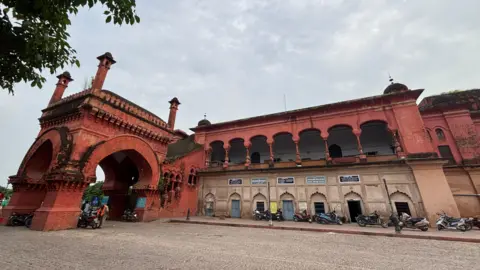 Aman/BBC
Aman/BBCShahid Ali Khan says he plans to go to court to demand a revision of the amount.
“We’ll ask why wasika isn’t paid in silver coins anymore. And if not in silver, then at least the amount equivalent to today’s silver value should be paid,” he says.
It is not only the monetary value of the wasika that has faded, but also the grandeur surrounding it.
Masood Abdullah, whose family has been receiving these payments for generations, recalls a time when collecting the pension felt like a festival, with sherbets and tea being sold on the day.
“People came in horse-drawn carriages and carts. I remember as a child, women travelled in curtained carriages for privacy. That tradition is gone now.”
Faiyaz Ali Khan’s father also told him that collecting the wasika was like attending a fair.
“There were vendors, food stalls, and hundreds of recipients gathered at the Picture Gallery,” he says.
“That atmosphere no longer exists.”
Follow BBC News India on Instagram, YouTube, X and Facebook.

